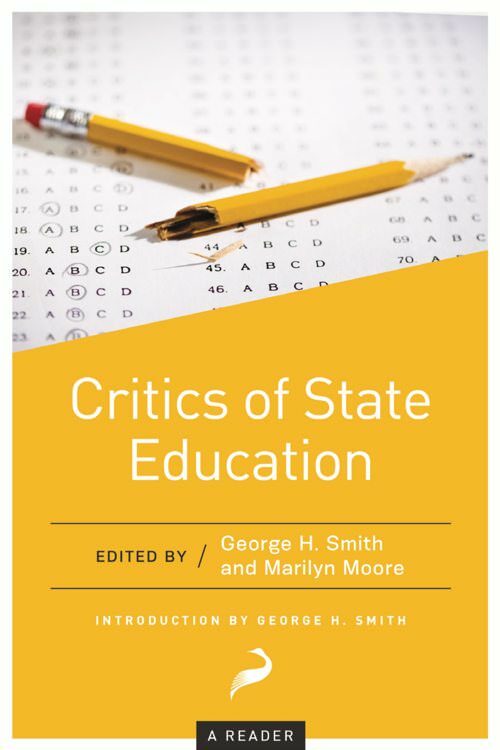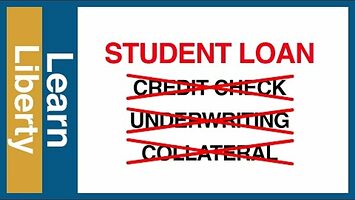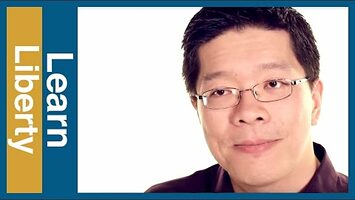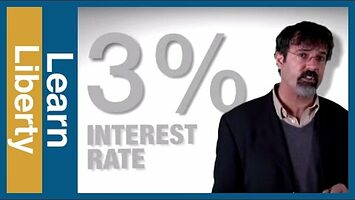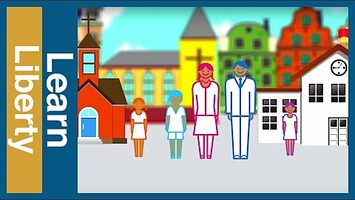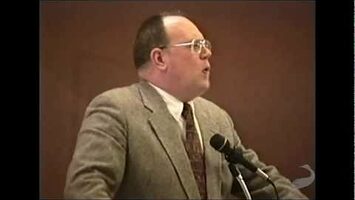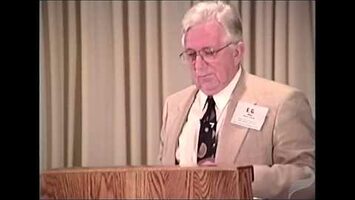Education
Encyclopedia
The term education refers to the systematic process through which students learn skills, values, knowledge, and customs. Preferences regarding the desired content and outcomes of education vary from family to family, although areas of significant consensus do exist. The origins of formal education in the West date back to the 5th century B.C., and a wide range of alternative funding systems have been employed over the institution’s 2,500-year history. Tax-funded government schooling currently predominates in industrialized countries, with the level of government at which power is concentrated varying from nation to nation.
Since the inception of modern government school systems in the mid- to late 19th century, occasional proposals have been made to reintroduce market incentives and parental choice. Calls for such reforms increased steadily during the last decades of the 20th century, leading to a vigorous debate over the relative merits of alternative structures.
The public’s educational expectations fall into two categories: the individual and the social. The first category includes things parents want for their own children; the second includes the broader social effects that citizens, as consumers, expect their educational system to produce. For parents, preparation for success in life and work is paramount, and specific goals include mastery of basic academic and job skills, moral and religious education, a safe and studious educational setting, and the wish that these goals can be achieved affordably. There is considerable agreement among parents on the importance of job skills and basic academics, but preferences vary dramatically in other areas, especially with respect to religious instruction. A sizable portion of the public in modern democracies views the goals of a good educational system as comprising the following: all children should have access to education regardless of income, schools should foster community harmony, schools should encourage parental involvement and responsibility, and schools should promote understanding of and participation in the democratic process.
Historically, systems of formal education have often taken shape through a gradual, evolutionary process. As economies have grown and trade has expanded, literacy has become increasingly valuable and parents are better able to do without their children’s labor. These developments have provided both the incentive and the opportunity for education.
One of the earliest cases of formal education directed beyond a small ruling elite was found in the Greek city-state of Athens during the early 5th century B.C. The prevailing view of the role of women and the institution of slavery both contributed to the fact that only free male children were formally educated. Of the eligible child population, the majority attended school for at least a few years. Both elementary and advanced instruction was offered by independent teachers who competed with one another to attract students. Tuition was sufficiently modest as to make education affordable to all but the destitute, although poor children generally attended school for fewer years than their wealthier fellows. Government played no role in the provision, funding, or regulation of education in Athens.
The sophistication, scope, and diversity of Athenian education grew over the course of the 5th century, and at least one school for girls was opened in the latter half of that century by the philosopher Aspasia. By the last decades of the 4th century, the education of girls had become commonplace throughout the Greek-speaking world. It is not possible to draw too many conclusions regarding the pedagogical system adopted in Athens, but it can be said that, during its height, Athens was the most literate, the most economically successful, and one of the most culturally vibrant societies of its time.
Education under the Roman republic of the late 2nd century B.C. was structured similarly to that in classical Athens. Cicero wrote, “Our people have never wished to have any system of education for the free-born youth which is either definitely fixed by law, or officially established, or uniform in all cases.” The most notable difference between the two systems was that Roman teachers were usually Greek slaves, whereas teachers in classical Athens had generally been free individuals. The educational control that parents enjoyed in Rome was gradually chipped away as the Republic gave way to the Empire in the 40s and 30s B.C. With the ascension of each new emperor, additional restrictions were placed on what could be taught and who could teach. Imperial authorities also began to offer sporadic subsidies to teachers during the 1st century A.D., particularly to those who spoke well of the imperial leadership and supported its policies.
With the dissolution of the Western Roman Empire in the 6th century, mass education disappeared in Europe, although isolated pockets of scholarship continued to exist, particularly around monasteries. However, just as popular literacy and learning were disappearing in the West, they began to take root in the East. By the 8th century, a vigorous market in education served families in Arab controlled areas from northwestern India to northwestern Africa and across the Mediterranean. There existed no systematic government regulation, provision, or funding of the market in education, although many schools were privately subsidized, thus broadening access to education. For several centuries, the Muslim world enjoyed a level of literacy at least the equal of anything that had gone before. In poetry and philosophy it was immensely prolific, and in the sciences it was unsurpassed. As one historian has observed, however, the vibrancy of this educational system began to wane in the 11th century, when schools fell under increasing state control and were transformed into tools for promoting narrow political and religious aims.
The 14th-century European Renaissance had only a slight effect on the education of the great majority of the public, and it was not until the 16th century that literacy began to again extend beyond the ruling elite. Certainly the invention of movable type and the commercialization of the book industry did much to increase literary throughout Europe. Literacy in the German states was among the highest in Europe during the 17th and 18th centuries, although its growth was at times impeded by the divergent goals of the nobility and the common people. The nobles subsidized the education of a Latin-speaking bureaucracy, whereas the masses of the people chiefly sought education in their mother tongue.
In England and the United States, near-universal literacy was achieved by the mid-19th century. Up to that point, education in both nations chiefly operated as a free, competitive enterprise, with only limited government provision or funding. However, the latter half of the 19th century marked the rise of fully tax-funded state-run school systems. Scholars have shown that total enrollment rates were largely unaffected by this transformation, although the combination of increasing education taxes and decreasing government school tuition (which eventually fell to zero) was followed by a significant shift of students from the private to the government sector.
The effects of this shift from market to state provisioning of educational services are in considerable dispute. Critics of state schooling argue that student achievement has stagnated or declined; parental choice, control, and involvement have diminished; efficiency has fallen and costs risen; and that community conflicts over the content of government schooling have become commonplace. In fact, studies have shown that currently the cost of public school education is appropriately twice that of the average private school. Defenders of government-run school systems, however, dispute all of these allegations. They assert that the average student today completes many more years of schooling, their achievements have held constant or gone up, pedagogical experts make better educational decisions than do parents, cost increases have either been overstated or are justifiable, community conflicts over education are not attributable to the state operation of schools, and the level of parental involvement is a cultural phenomenon unrelated to school governance structures.
These different assessments have spurred a debate over the merits of market-run versus state-run education. No consensus has yet been reached, and there exist several occasionally overlapping viewpoints. At one end of the spectrum are those who feel that government schooling is the best, if not the only, mechanism for fulfilling the public’s social goals for education. This group advocates improving educational outcomes through higher spending, reduced class sizes, enhanced teacher certification and training, leadership programs for administrators, and the like. A second group also sees the government operation and oversight of schools as indispensable, but believes that the system would improve if all families chose from among the available government schools, rather than having their children automatically assigned to a school. This practice is known as public school choice. A third group agrees with the need for parental choice, but feels that that choice is too confined by existing government school regulations. They recommend easing these regulations for state schools that promise to deliver a minimum level of student achievement. Government schools operating under this combination of eased regulations and contractual performance obligations are called charter schools. Charter schools, argues a fourth group, are good so far as they go, but do not go far enough. This group believes that government schools operating under charters have too many limitations compared with independent schools, among them the likelihood of reregulation and the inability to offer devotional religious instruction, set tuition levels, or control admissions. Their solution to these problems is to allow for state subsidization of education without government provision of schooling. In particular, they recommend that the state distribute the money it collects in taxes earmarked for education directly to families on a per-child basis. These disbursements, most famously proposed by economist Milton Friedman in the early 1950s, have come to be known as vouchers. A final group asserts that the pseudo-market policies advocated by the other groups would not produce a competitive, consumer-driven education industry. This last group further contends that genuinely free markets in education, when supplemented with means-tested private or state subsidies, best meet the public’s individual and social goals for education.
Further Readings
Bowen, James. A History of Western Education: Volume One. The Ancient World: Orient and Mediterranean. New York: St. Martin’s Press, 1972.
Cicero. “The Republic.” Cicero XVI. London: Heinemann, 1988.
Coulson, Andrew J. Market Education: The Unknown History. New Brunswick, NJ: Transaction, 1999.
Marrou, Henri I. A History of Education in Antiquity. Madison: University of Wisconsin Press, 1982.
Nakosteen, M. History of Islamic Origins of Western Education. Boulder: University of Colorado Press, 1964.
West, E. G. Education and the State: A Study in Political Economy. Indianapolis, IN: Liberty Fund, 1994.












